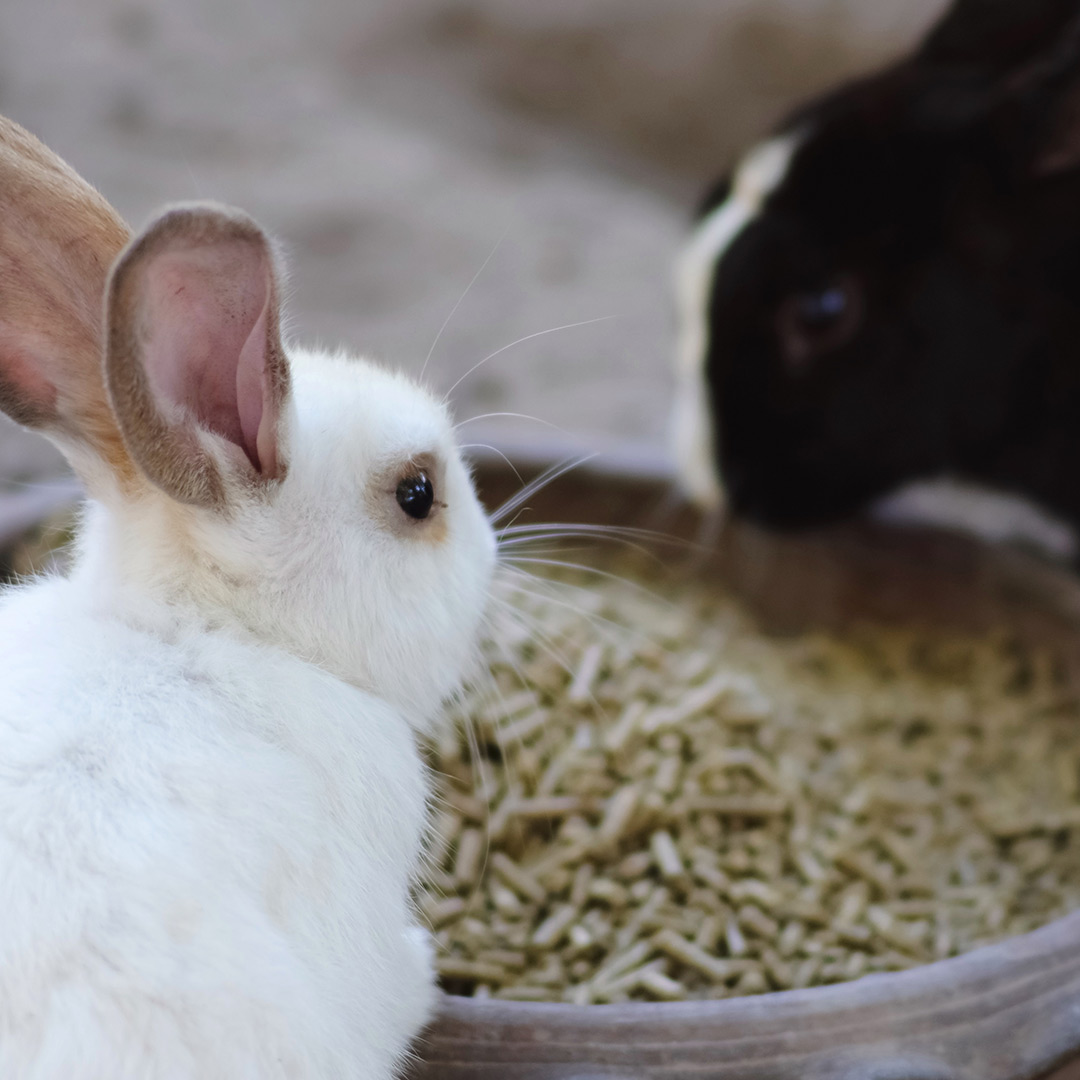Proper diet for rabbits
Saturday morning cartoons sure have changed since I was a child. Armed with a bowl of sugar loosely disguised as cereal, I remember gluing myself to the TV watching Daffy, Bugs, Foghorn Leghorn and lots of other funny and memorable characters keeping me laughing all morning. Who doesn’t remember the image of Bugs Bunny chomping on that big orange carrot while arguing with Daffy Duck whether it was ‘Wabbit Season’ or ‘Duck Season?’ It’s hard to find Bugs on TV these days- and I think it’s because he ate too many carrots and not enough other foods higher in fiber. In today’s blog, we’ll discuss the need for Bugs to eat less carrots in favor of other foods that will keep him healthy.
Seriously, though- rabbits in the real world need proper nutrition in order to live long, healthy lives. Actually, a rabbit’s digestive system is much different from that of a dog, cat or most other mammals. In most mammals, the majority of food digestion takes place in the stomach and small intestine. Rabbits are what we call ‘hind-gut’ fermenters which means the majority of their digestion takes place further down the road in the digestive system. Most of a rabbit’s digestion takes place in a section of the large intestine called the cecum. Because of their unique digestive system, they need a diet high in fiber.

Hay there!
There are three components to a healthy adult rabbit’s diet, but the bulk of their diet should be hay. Your rabbit should have access to fresh hay all day. But not just any hay- as not all hay is equal. For an adult rabbit, Irecommend Timothy Hay which is widely available from pet stores and specifically marketed for rabbits and other herbivores. You can also consider other grass hays like Meadow hay or Orchard hay which can be found in feed stores in our area as well as pet stores, but my go-to hay is most always Timothy Hay.
If you have multiple rabbits, or are considering having lots of rabbits, you may wish to consider buying hay in bulk. Bales can be cheaper in the long run, but keep in mind that as the hay ages it may lose nutritional value. The greener the hay, the more nutrients it will contain. Look for hay that is sweet smelling and not moldy. It should be relatively free of dust and not be wet or damp, which can lead to mold.
Alfalfa hay is also widely available, but it is not an appropriate mainstay for an adult rabbit’s diet. Actually, alfalfa hay is not a grass at all, but is a legume. Alfalfa is high in both protein and calcium, which makes it a great food for younger rabbits but not for adults. I would consider this for an underweight rabbit to add some weight, but not long term as there may be resulting health issues.

Pellets
Pellets should make up a smaller portion of a healthy rabbit’s daily intake. Depending on the size and metabolic rate of your rabbit, you should offer 1/6 to 1/4 of a cup per 6 pounds of body weight. Not all pellets are created equal. The average pet rabbit should be fed a high-quality Timothy hay based pellet. In some instances, we may elect to supplement with some alfalfa based pellets, but this is in limited situations which can be discussed during your rabbit’s annual exam and consultation. We recommend Oxbow brand pellets as these are high-quality, clean, and have the appropriate balance of nutrition.
Vegetables
Here’s where Bugs Bunny got it wrong with the carrots. A small amount of fresh vegetables should be offered daily. Approximately 2 cups of vegetables and leafy greens can be added to a 6 pound rabbit’s daily intake. Recommended greens include collard greens, mustard greens, dandelion greens, clover, cilantro, and carrot tops. Avoid cabbage and broccoli as these can cause gas! Other vegetables can be fed too, but avoid feeding vegetables high in sugar (i.e. carrots) or high in oxalates (i.e. spinach). Calcium rich vegetables can be fed occasionally but these should not be fed daily as rabbits are more sensitive to calcium than other mammals.
Other foods can be fed to rabbits, but only as treats. Some fruits can be fed but avoid high-sugar fruits. Good suggestions include apples, blueberries, pears, strawberries, etc. No yogurt covered treats or other high-sugar treats should be offered. Also avoid human food, such as pastas, breads, and crackers. The graphic included is a good resource for what your rabbit can eat- and what they can’t. Remember- hay should still make up 80% of their diet!
I’m still trying to figure out how Bugs Bunny kept such a trim figure while eating all of those sugary carrots. Maybe while he was avoiding Elmer Fudd he was munching away on hay, which is quieter than those crunchy carrots. Who knows? If you have any questions or concerns about your rabbit’s diet, we would be happy to discuss them with you during your next appointment.
